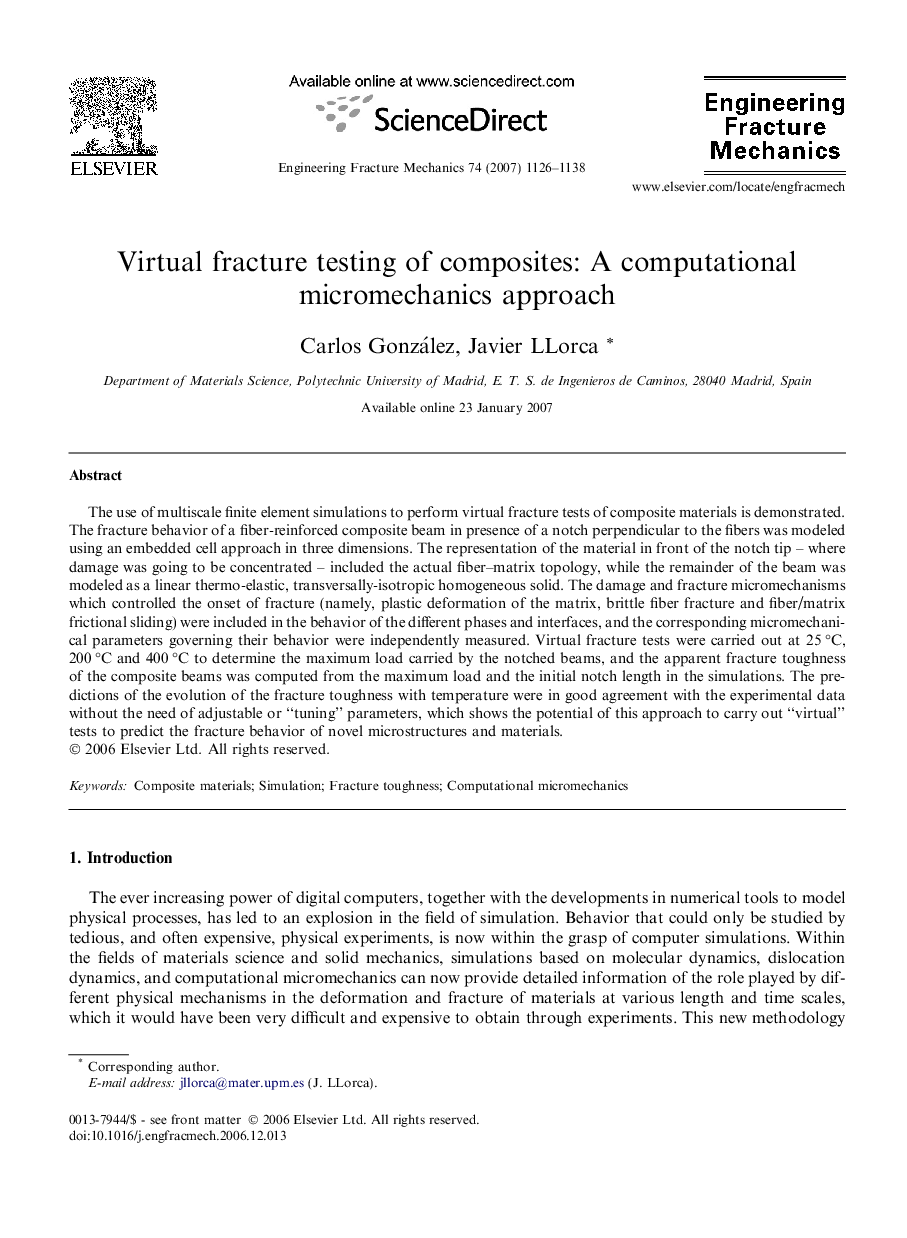| Article ID | Journal | Published Year | Pages | File Type |
|---|---|---|---|---|
| 771384 | Engineering Fracture Mechanics | 2007 | 13 Pages |
The use of multiscale finite element simulations to perform virtual fracture tests of composite materials is demonstrated. The fracture behavior of a fiber-reinforced composite beam in presence of a notch perpendicular to the fibers was modeled using an embedded cell approach in three dimensions. The representation of the material in front of the notch tip – where damage was going to be concentrated – included the actual fiber–matrix topology, while the remainder of the beam was modeled as a linear thermo-elastic, transversally-isotropic homogeneous solid. The damage and fracture micromechanisms which controlled the onset of fracture (namely, plastic deformation of the matrix, brittle fiber fracture and fiber/matrix frictional sliding) were included in the behavior of the different phases and interfaces, and the corresponding micromechanical parameters governing their behavior were independently measured. Virtual fracture tests were carried out at 25 °C, 200 °C and 400 °C to determine the maximum load carried by the notched beams, and the apparent fracture toughness of the composite beams was computed from the maximum load and the initial notch length in the simulations. The predictions of the evolution of the fracture toughness with temperature were in good agreement with the experimental data without the need of adjustable or “tuning” parameters, which shows the potential of this approach to carry out “virtual” tests to predict the fracture behavior of novel microstructures and materials.
